When Do Border Collie Ears Stand Up? (Timeline)
Border Collies are intelligent and energetic dogs that are widely admired for their herding instincts and workaholic nature. Often considered one of the most trainable breeds, many potential owners may have questions about their development, especially when it comes to their ears. Border Collie ears can stand up, remain floppy, or be somewhere in between, and understanding when this occurs can be an essential aspect of their growth and breed characteristics.
During the early stages of a Border Collie’s life, their ears may be seen in various positions due to the different factors that come into play, such as genetics and environmental aspects. Generally, as the Border Collie pup grows and matures, their ears may start to stand up between 4-6 months of age.
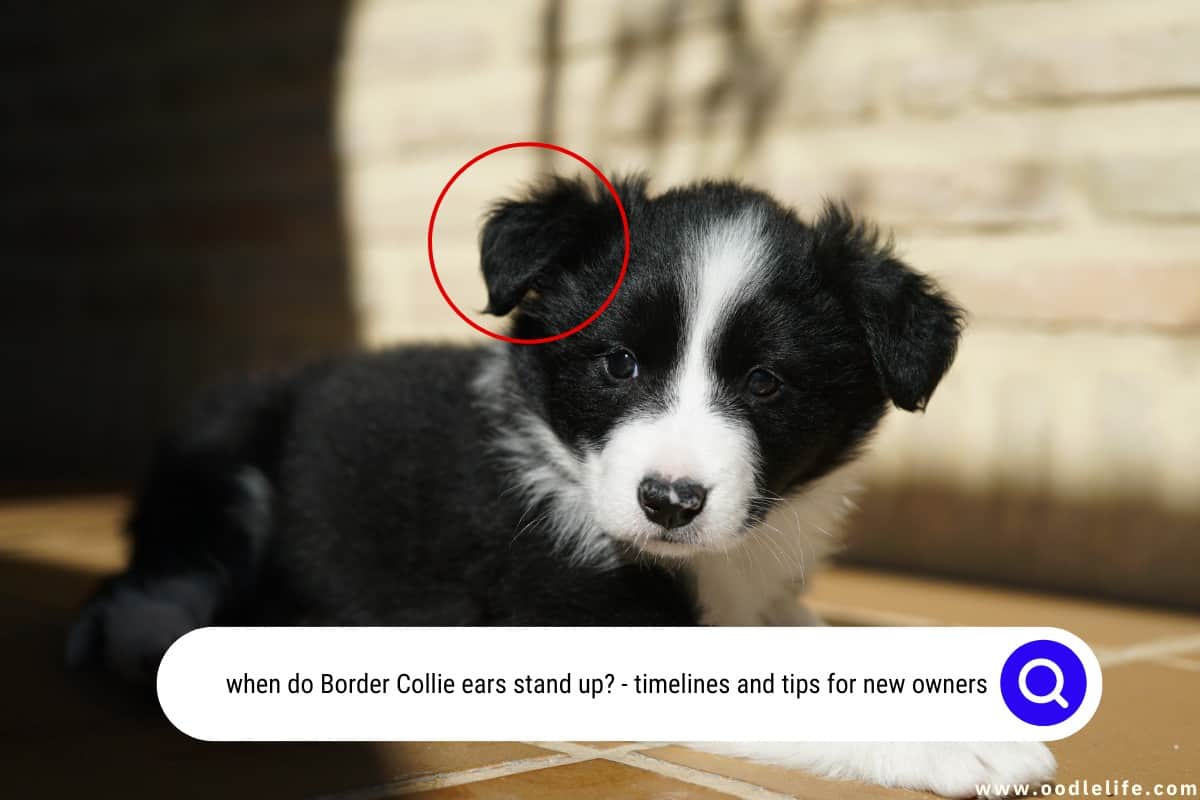
However, it is important to note that not all Border Collie ears will fully stand up, as breed variations can lead to diverse ear shapes and positions.
Key Takeaways
- Border Collie ears may start to stand up between 4-6 months of age, but variations can occur.
- Genetics, environmental aspects, and breed variations contribute to the position of Border Collie ears.
- Understanding and monitoring ear development is essential for Border Collie owners.
Border Collie Ears and Their Development
Basic Ear Anatomy
Border Collie ears are known for their unique appearance, often described as semi-erect. They have a triangular shape with rounded tips and vary between being fully erect to being completely floppy. The key is that their ears are highly expressive, and they can move them to convey emotions and focus on sounds.
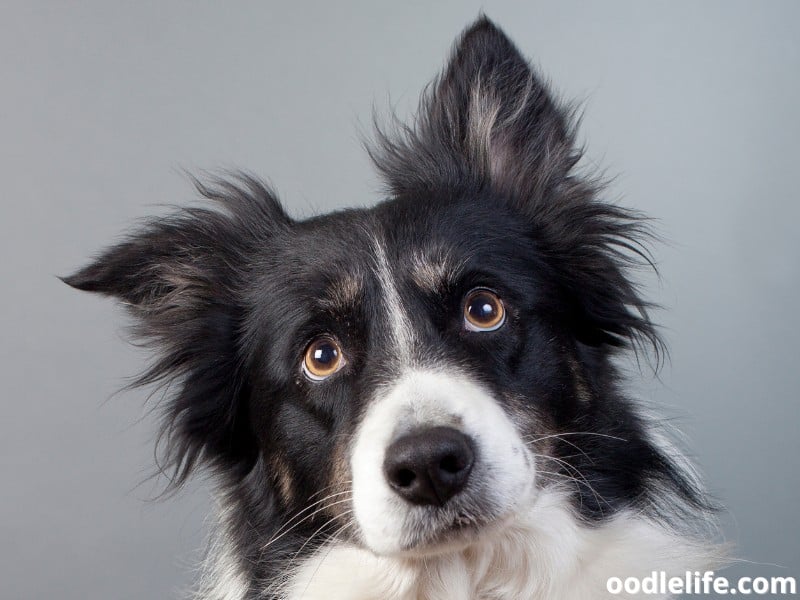
Puppy Ear Development
During the early stages of a Border Collie puppy’s life, their ears tend to be floppy. As they grow, their ears gradually begin to change in position and structure. It’s essential to remember that each puppy develops at its own pace, so there’s no strict timeline for when their ears will stand up.

Some Border Collie puppies may have fully erect ears as early as 8-12 weeks old, while others may take several months to reach that stage. In rare cases, their ears may even remain floppy throughout their adult life.
One fun aspect of observing Border Collie puppy ears is that they may appear to switch between floppy and erect as they grow. They might even look uneven, with one ear standing up while the other stays down. Don’t worry, though; this is all part of their development, and it adds a touch of humor to the process.
Adult Ear Development
By the time a Border Collie reaches adulthood, their ears should have reached their final form. The adult ear shape usually ranges from semi-erect to fully erect, with some variations due to factors such as genetics, overall health, or even individual personality.
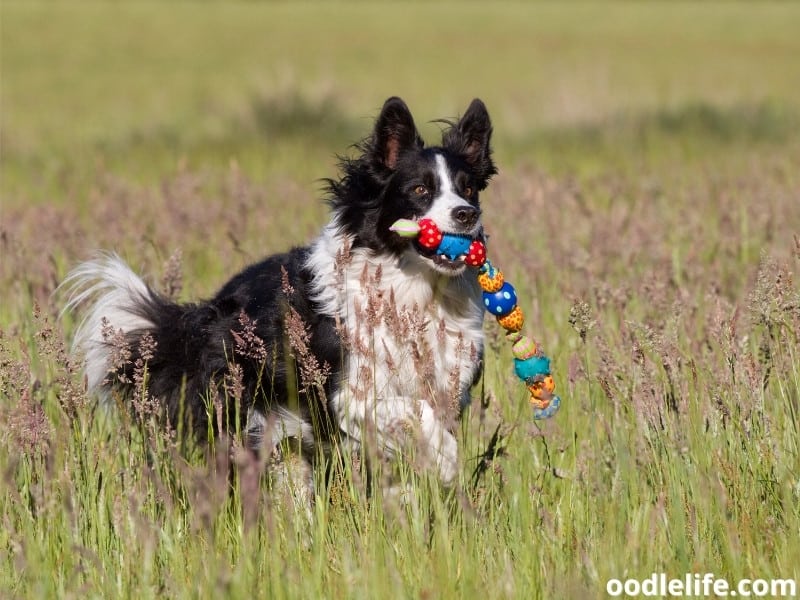
If your adult Border Collie has floppy ears and this is a concern for you, consider consulting your veterinarian. However, it’s worth noting that the shape of a Border Collie’s ears has no impact on their ability to be great companions or working dogs. Ultimately, it’s just one of the many charming traits that make them unique.
Factors Influencing Border Collie Ear Stages
Genetic Influences
Border Collie ears can stand up or remain floppy at different ages, and a major factor influencing this process is genetics. The genes inherited from the dog’s parents play a significant role in determining when and how their ears will develop. Some Border Collies have ears that stand up earlier, while others may have ears that remain folded for a longer time.

Remember, every dog is unique, just like their ear journeys– a tale of one Border Collie may not tell the story of another.
Teething and Ear Changes
Teething is a fascinating time for young Border Collies, as their ears might go through some unexpected transformations during this stage. As their baby teeth make way for adult teeth, calcium levels in the body may fluctuate, affecting ear cartilage strength. Consequently, you may notice your puppy’s once-upright ears turning floppy or vice versa.
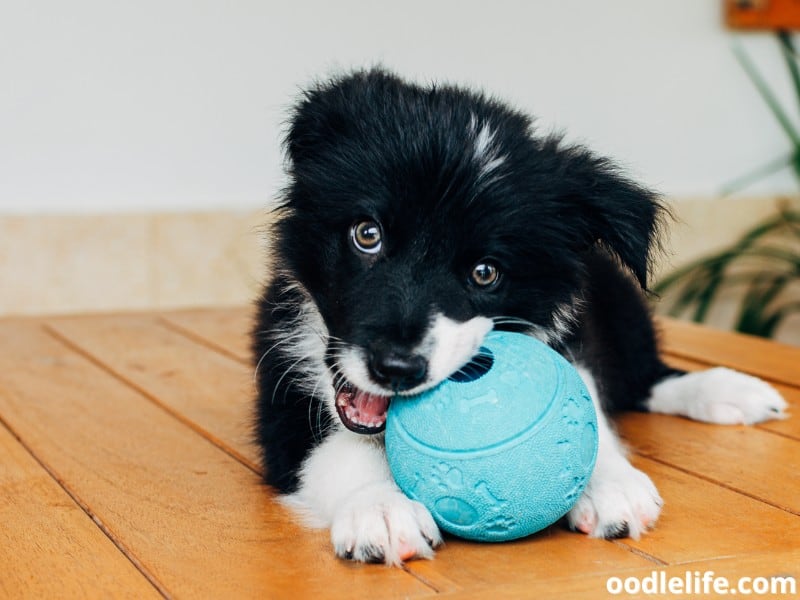
This change is undoubtedly a surprise for puppy parents, but rest assured, it’s a normal part of canine adolescence.
Health and Environmental Factors
A Border Collie’s ear development can also be influenced by health and environmental factors. For instance, proper diet and nutrition are essential for optimal ear growth. A well-balanced diet provides the vitamins and minerals needed to support cartilage development.

On the flip side, infections, ear mites, and other ear canal issues can hinder ear standing and cause discomfort for the dog.
Environmental factors can also affect ear development in Border Collies. Engaging your puppy in activities that challenge their ears, like agility training and rubbing their ears, could help strengthen the ear muscles. But be gentle – nobody wants to be known as the person who broke their Border Collie’s ears!
So, while we can’t exactly predict when your Border Collie’s ears will stand up, it’s important to remember that it’s the result of a fascinating interplay of genetics, health, and environmental factors. Well, at least we can agree on one thing– floppy or upright, your Border Collie’s ears are simply adorable!
Techniques and Care for Border Collie Ears
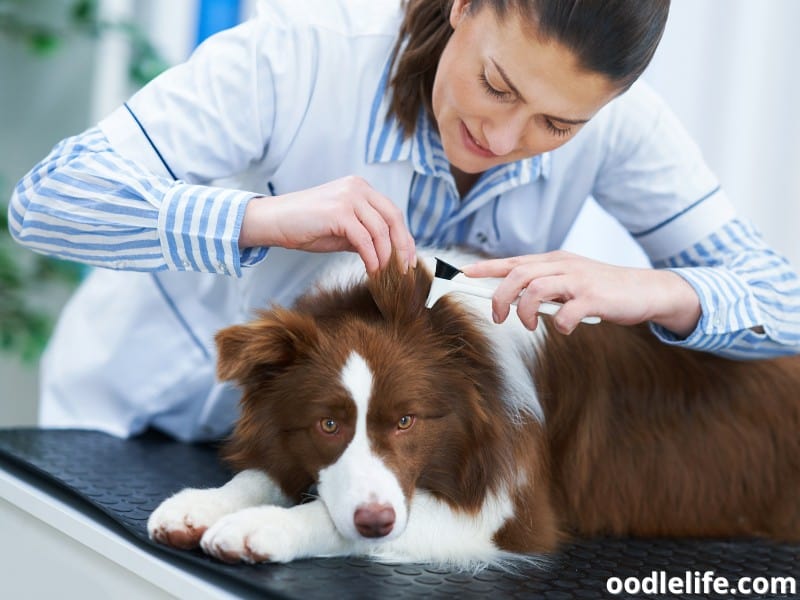
Taping and Supplements
Border Collie ears can vary in position, from fully erect to semi-erect. If you’d like to encourage your Border Collie’s ears to stand up, you can try taping them. This involves gently folding the ear forward and securing it with a soft, hypoallergenic tape.
Keep the tape on for a week or two, then gradually increase the time without tape, allowing the cartilage to firm up and maintain its shape. Remember, every dog is unique, so don’t stress if your pup’s ears aren’t picture-perfect.
Another approach to help your Border Collie’s ears stand up is providing them with dietary supplements. Omega-3 fatty acids are particularly beneficial for promoting healthy cartilage and skin. Be sure to consult with your veterinarian before introducing supplements to your dog’s diet.
Cleaning and Preventing Infections
Keep your Border Collie’s ears spick and span by incorporating regular ear cleaning into their grooming routine. Use a moist cotton ball or soft cloth to gently wipe the outer ear, being careful not to venture too deep – nobody wants an unexpected trip to the doggy ER! Regular cleaning can prevent dirt, debris, and bacteria from accumulating, which in turn helps to stave off infections.
We don’t want our little furballs to be uncomfortable, now, do we?
Regular Check-Ups and Monitoring
Monitoring your Border Collie’s ears and conducting regular check-ups is crucial in detecting potential issues. Pay close attention to any signs of discomfort or changes in behavior that might indicate an ear problem. If your dog is excessively scratching or shaking their head, it’s time to consult the professionals – your trusted veterinarian.
On top of keeping a watchful eye, schedule routine visits to your vet for a thorough ear examination. Prevention is always better than cure, especially when it comes to our four-legged friends. So let Fido’s ears be the talk of the dog park – in the best way possible!
Border Collie Breed Standards and Ear Variations
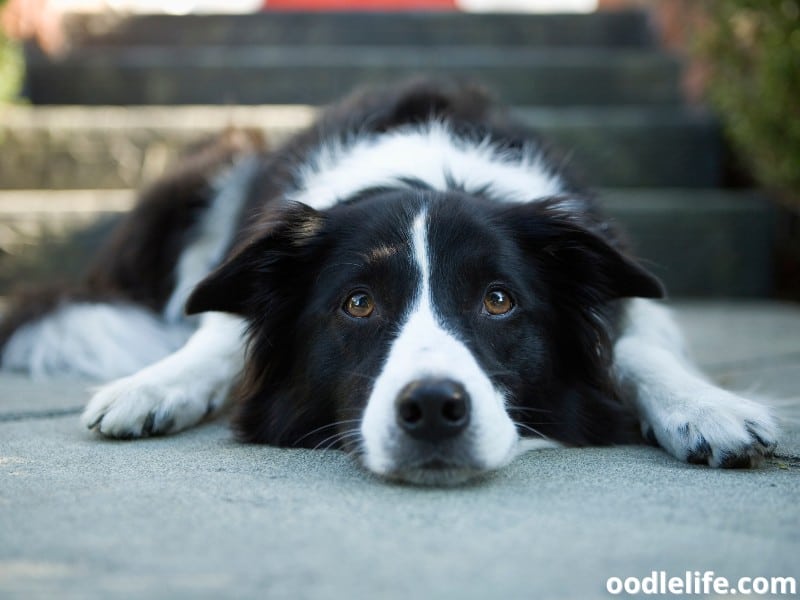
American Kennel Club Breed Standards
The American Kennel Club (AKC) has specific standards for the Border Collie breed, including their ears. According to the AKC, Border Collies should have medium-sized ears that are “set well apart” on the head. The ears should have a moderate thickness and should be slightly “spoon-shaped.”
They can have varying erect ear carriages, from completely pricked ears to semi-erect with the tips folded forward. Upright ears are acceptable, but very rare.
Imagine a Border Collie with fully pricked ears like a cat catching a glimpse of a suspicious bird. Or, picture a semi-erected ear Border Collie expressing its emotions with slightly folded tips when it’s happy or excited – it’s just ear-resistible!
Variability and Genetic Inheritance
Border Collies can have different ear shapes and carriage styles due to variability and genetic inheritance. They may even have mixed or unequal ear carriage on either side of their heads! No two Border Collies are exactly the same, adding to their unique charm and working capabilities as herding dogs.
While standing ears in Border Collies are less common than in some other breeds, it still happens. A paper on “Variation in genes related to cochlear biology” mentions that the hearing in Border Collies can be crucial for deciphering slight differences in the tone of whistles, which is essential for working dogs. These subtle variations in ear carriage might contribute to their extraordinary hearing skills in different environments.
In summary, the Border Collie ear shape and carriage can vary widely within the breed standards established by the American Kennel Club. From pricked ears to those with semi-erect carriages, each Border Collie is uniquely styled, and it’s this lovely variety that makes this breed so endearing!
Border Collie Temperament and Activities
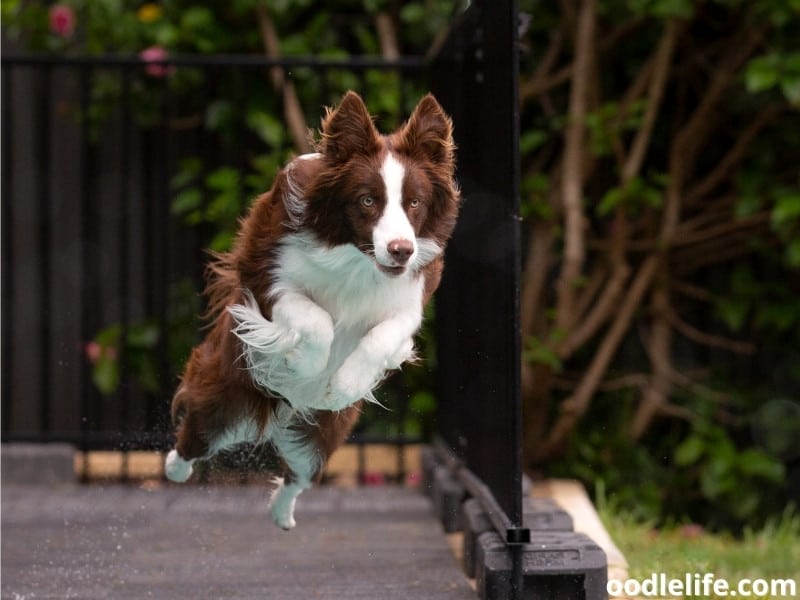
Intelligence and Energy Levels
Border Collies are known for their high intelligence and abundant energy. These traits make them ideal working dogs, as they have the brains and stamina necessary for tasks like herding livestock. Their impeccable problem-solving skills can sometimes make them a little too clever for their own good, leading to creative escapes from the backyard or figuring out how to open the treat jar.
In a Border Collie’s mind, they’re always one step ahead of their humans.
These canine companions aren’t just brains though; they have the energy to back it up. A bored Border Collie is a recipe for disaster, as their energy levels can quickly turn into restlessness. Remember that saying, “idle paws are the devil’s workshop”?
It’s practically written with the Border Collie in mind.
Activities and Sports
To keep these energetic dogs engaged, it’s essential to find activities and sports for them to participate in. Some popular choices include:
- Agility: This fast-paced, obstacle course-based sport is a perfect match for Border Collies, who excel at weaving through poles, jumping over hurdles, and darting through tunnels. It’s like a doggy decathlon, showcasing their athleticism and problem-solving skills.
- Obedience: Another excellent outlet for their intelligence, obedience competitions test a dog’s ability to follow commands, perform tricks, and exhibit good behavior. Border Collies are naturally eager to please, making them strong contenders in this category.
- Sheep Trials: As working dogs, Border Collies were bred to herd livestock, so it’s no surprise that they take to sheep trials like a fish to water. This sport tests their herding ability in a controlled environment, bringing out their natural instincts.
- Canine Companions: Border Collies can serve as fantastic companions for those who can keep up with their high energy, such as hikers, runners, or bikers. Some even participate in dog dancing competitions, showcasing their agility and bond with their owners.
In conclusion, when it comes to Border Collies, keeping them busy is the secret to a harmonious relationship. With their intelligence and energy, the sky’s the limit for what these furry athletes can achieve, whether they’re winning ribbons, herding sheep, or simply being a loyal adventuring partner.
Frequently Asked Questions
At what age do Border Collie ears typically stand up?
Border Collie ears can begin to stand up at various ages, anywhere between a few months old and up to a year. It’s important to remember that each dog is unique, and the age at which their ears become erect can vary.
What factors influence a Border Collie’s ear development?
Several factors can influence the development of a Border Collie’s ears, including genetics, physical development, overall health, and environmental factors. Nutrition can also play a role in the strength and structure of your Border Collie’s ears.
How can I tell if my Border Collie’s ears will become erect?
It can be challenging to predict whether a Border Collie’s ears will become erect. It’s best to wait until the dog is fully developed, which can be around 1 year old, to determine the permanent shape of their ears. Keep in mind that some Border Collies have “tipped” or partially erect ears, which are also common and acceptable in the breed.
Is it normal for a Border Collie to have one ear up and one down?
It can be normal for a Border Collie to have one ear up and one down during the development stages. However, once the dog reaches maturity, having asymmetrical ears is less common but not a cause for concern. It simply adds character and individuality to your dog.
Should I consider taping my Border Collie’s ears to help them stand up?
You should consult with a veterinarian or a professional dog breeder before considering taping your Border Collie’s ears. In some cases, it may help, but in other cases, it can lead to unnecessary stress on the dog and may not achieve the desired outcome.
What does the breed standard say about Border Collie ears?
The breed standard for Border Collies states that their ears can be erect, semi-erect, or even tipped. It is not required for them to be fully erect for the dog to be considered a Breed Standard Border Collie. Keep in mind that the most important aspect is the dog’s overall health and well-being, not just the appearance of their ears.